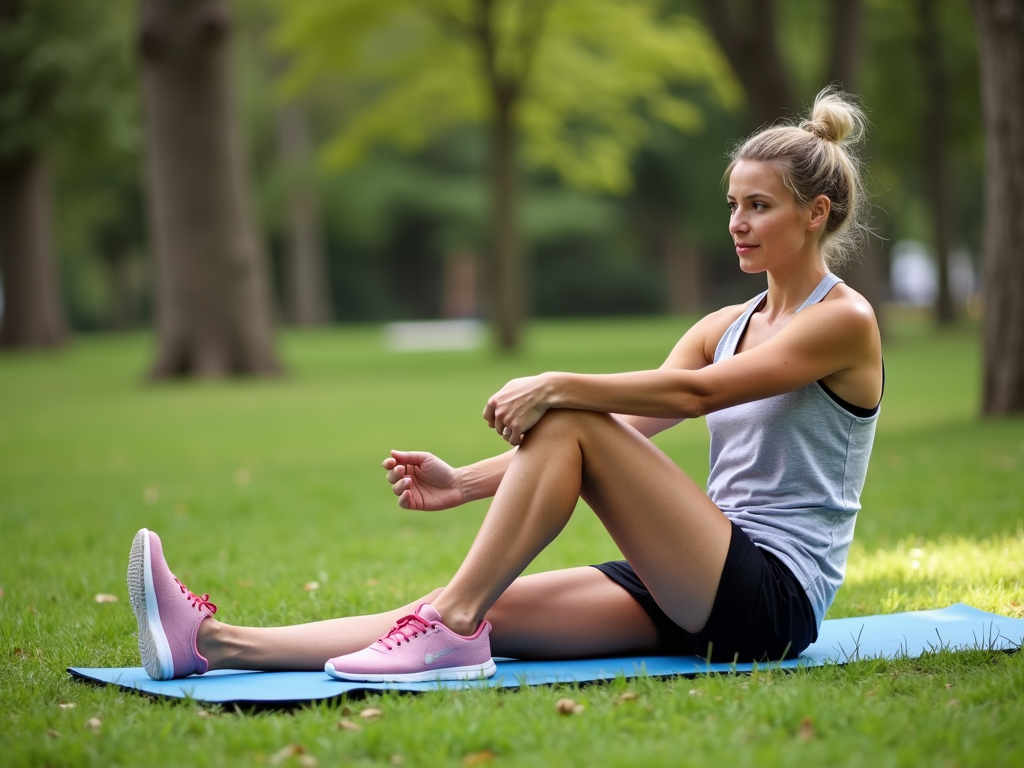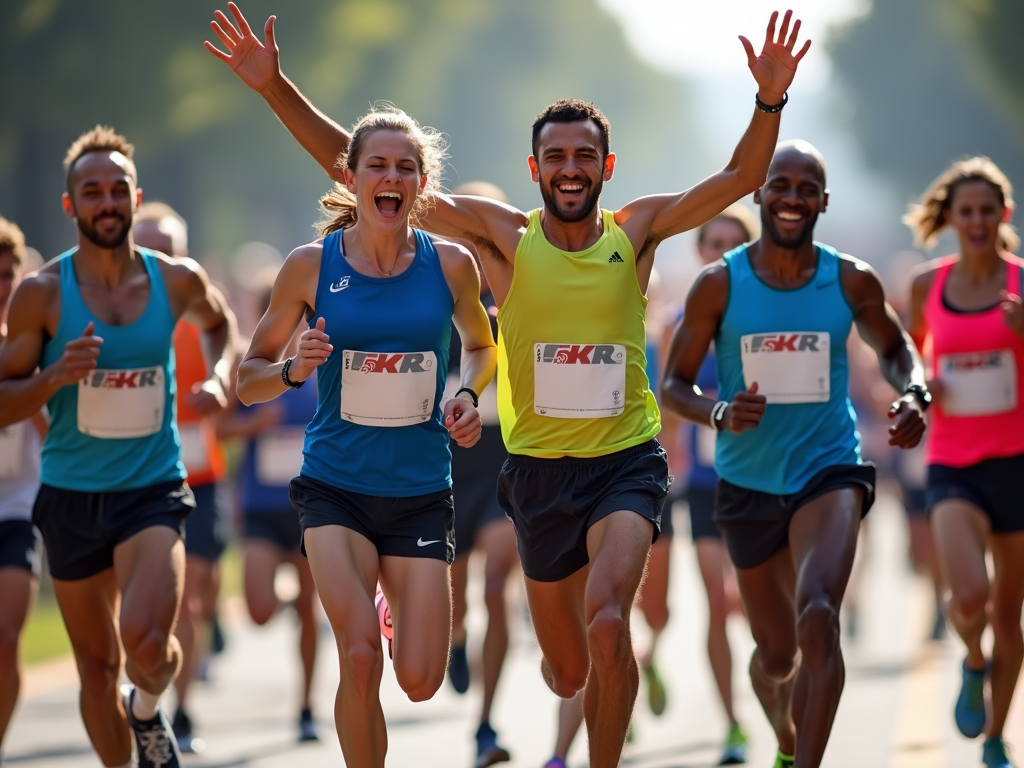Running is a fantastic way to stay fit, but it can also lead to injuries if not managed properly. While the RICE method (Rest, Ice, Compression, Elevation) has been a go-to for many, there are more comprehensive recovery techniques that can help runners bounce back faster and stronger. In this article, we'll explore these techniques, provide tips for beginners, and discuss how to stay motivated during fitness challenges like summer 5K runs.
Understanding RICE and Its Limitations
The RICE method has been a staple in sports medicine for decades. It involves:
- Rest: Avoiding activity to prevent further injury.
- Ice: Applying ice to reduce swelling and pain.
- Compression: Using bandages or wraps to minimize swelling.
- Elevation: Keeping the injured area above heart level to reduce swelling.
While RICE can be effective for acute injuries, it has its limitations. For instance, prolonged rest can lead to muscle atrophy, and ice might not be suitable for all types of injuries. Moreover, RICE primarily addresses symptoms rather than promoting active healing. As runners, we need recovery techniques that not only treat injuries but also enhance overall performance and prevent future issues.
Alternative Recovery Techniques
1. Active Recovery
Active recovery involves engaging in low-intensity activities that promote blood flow without stressing the injured area. This can include:
- Light jogging or walking
- Swimming or water aerobics
- Cycling at a leisurely pace
These activities help maintain cardiovascular fitness and can speed up the healing process by increasing circulation.

2. Stretching and Flexibility
Stretching is crucial for runners to maintain flexibility and prevent injuries. There are different types of stretches:
- Static Stretching: Holding a stretch for 15-30 seconds to improve flexibility.
- Dynamic Stretching: Moving through a range of motion to prepare muscles for activity.
- PNF Stretching: A technique that involves contracting and relaxing muscles to increase flexibility.
Incorporating a regular stretching routine can help alleviate muscle tightness and improve running efficiency.

3. Strength Training
Strength training is essential for runners to build muscle resilience and prevent injuries. Key areas to focus on include:
- Core Strength: Planks, Russian twists, and leg raises.
- Leg Strength: Squats, lunges, and calf raises.
- Hip Stability: Clamshells, hip bridges, and lateral leg raises.
By strengthening these areas, runners can improve their form and reduce the risk of common injuries like runner's knee or IT band syndrome.

4. Nutrition and Hydration
Proper nutrition plays a vital role in recovery. Runners should focus on:
- Protein: For muscle repair and growth.
- Carbohydrates: To replenish glycogen stores.
- Healthy Fats: For inflammation reduction.
- Hydration: Drinking enough water and electrolytes to maintain fluid balance.
Consuming a balanced diet can significantly enhance recovery and performance.

5. Sleep and Rest
While rest is part of RICE, it's important to emphasize the quality of sleep and overall rest. Sleep is when the body repairs itself, so aiming for 7-9 hours of quality sleep per night is crucial. Tips for better sleep include:
- Establishing a regular sleep schedule.
- Creating a relaxing bedtime routine.
- Avoiding screens before bed.

6. Mental Recovery
Mental health is often overlooked in physical recovery. Techniques like meditation, deep breathing, or yoga can help reduce stress and improve focus. A positive mindset can also aid in faster recovery and better performance.

7. Tools and Technology
Various tools can aid in recovery:
- Foam Rollers: For self-myofascial release to reduce muscle tightness.
- Massage Guns: To target specific muscle groups and improve circulation.
- Compression Gear: To enhance blood flow and reduce swelling.
Using these tools correctly can complement other recovery techniques.

Overcoming Common Running Injuries
Common running injuries include shin splints, runner's knee, IT band syndrome, and plantar fasciitis. By incorporating the recovery techniques mentioned above, runners can manage and prevent these injuries. For example:
- Shin Splints: Strength training for calves and proper footwear.
- Runner's Knee: Strengthening quadriceps and hips.
- IT Band Syndrome: Foam rolling and hip strengthening exercises.
- Plantar Fasciitis: Stretching calf muscles and using supportive shoes.
It's essential to listen to your body and seek professional advice if injuries persist.
Tips for Beginner Runners
If you're new to running, here are some tips to get started safely:
- Start Slow: Begin with a mix of walking and running, gradually increasing running time.
- Proper Footwear: Invest in good running shoes that suit your foot type and running style.
- Listen to Your Body: Don't ignore pain; it's a signal that something might be wrong.
- Incorporate Recovery: From the beginning, include stretching, strength training, and rest days in your routine.
Staying Motivated During Fitness Challenges
Staying motivated can be challenging, especially during fitness challenges like summer 5K runs. Here are some strategies:
- Set Realistic Goals: Break down your main goal into smaller, achievable milestones.
- Find a Community: Join a running group or find a running buddy for support and accountability.
- Track Progress: Use apps or journals to monitor your improvement and celebrate small victories.
- Participate in Events: Sign up for local 5K runs or virtual challenges to keep yourself engaged.

Summary
Recovery is a critical component of any runner's training regimen. While RICE has its place, exploring techniques beyond it can lead to better outcomes and enhanced performance. By incorporating active recovery, stretching, strength training, proper nutrition, quality sleep, mental recovery, and using recovery tools, runners can prevent injuries and recover more effectively. Beginners should start slow and prioritize recovery from the outset, while all runners can benefit from staying motivated through community and goal-setting. Remember, every runner is unique, so experiment with these techniques to find what works best for you.
Discuss Here